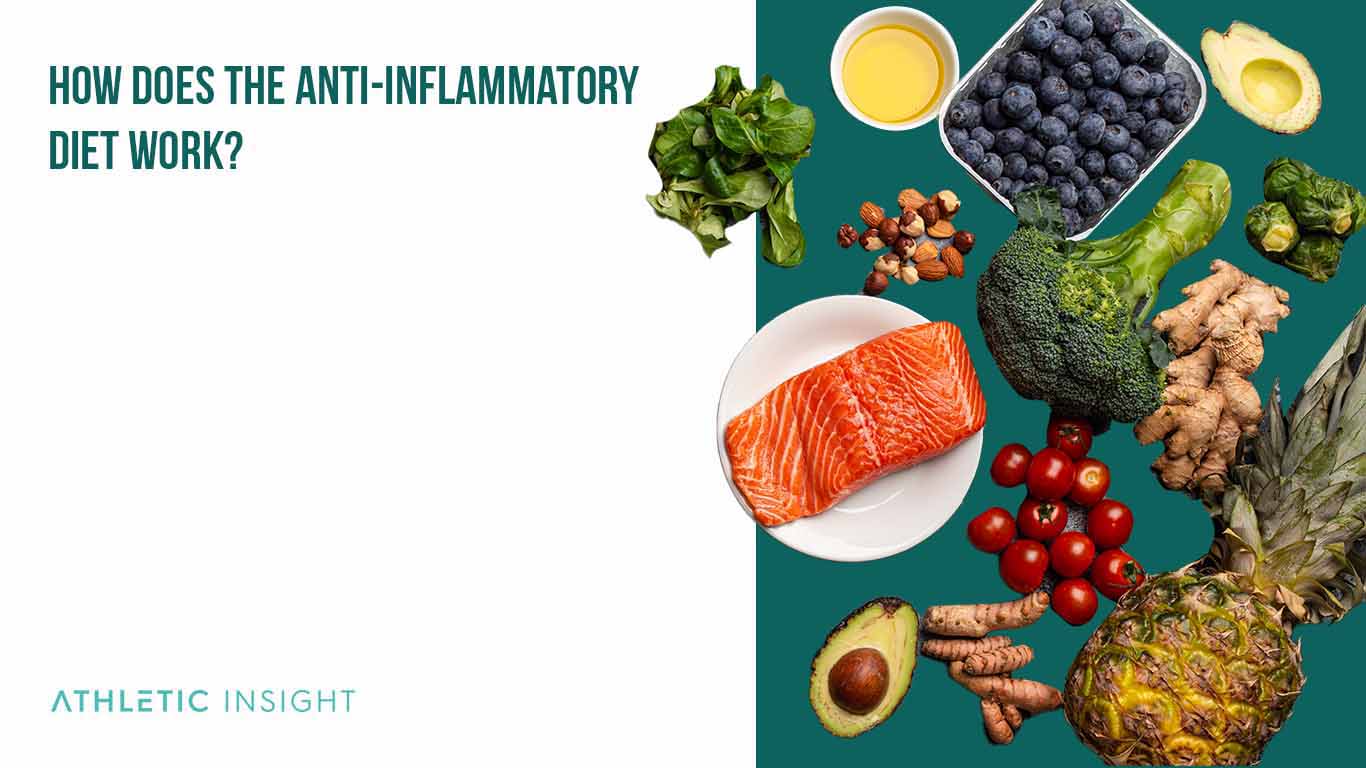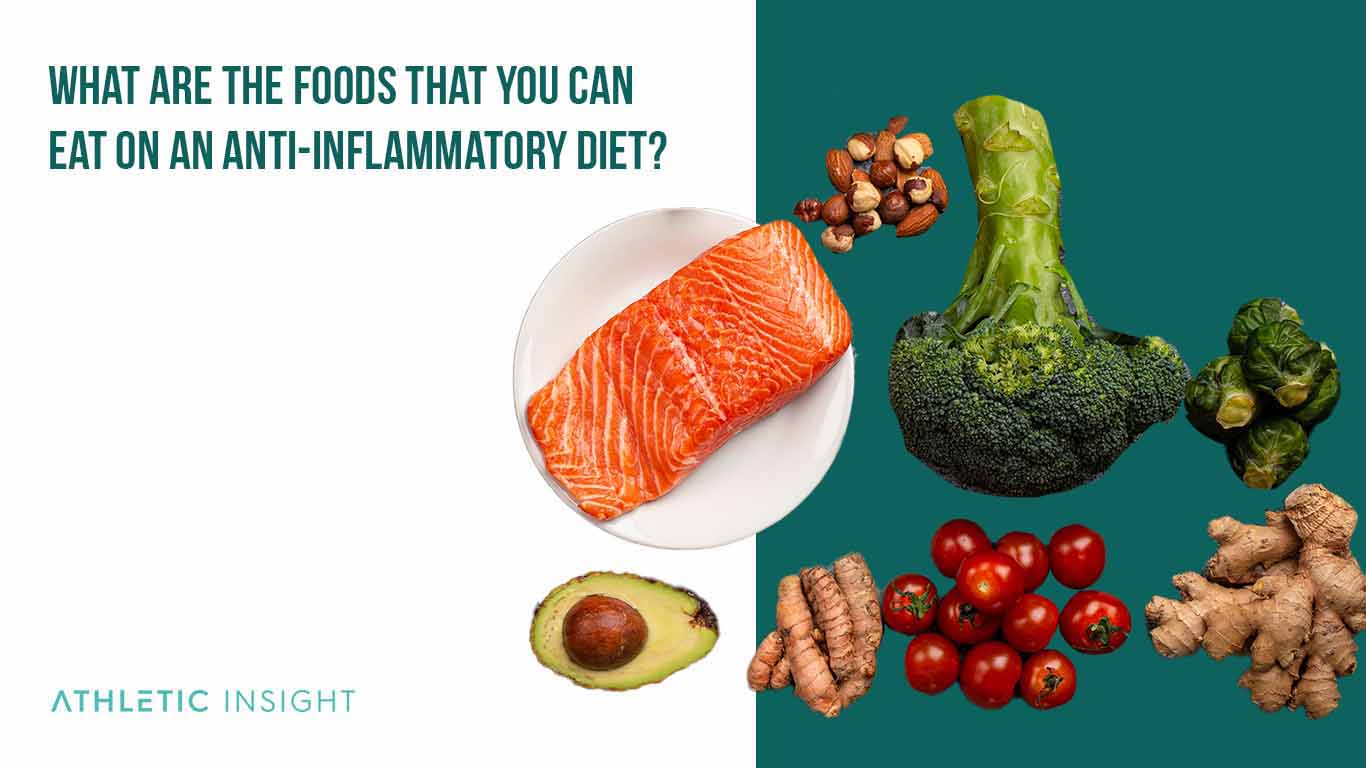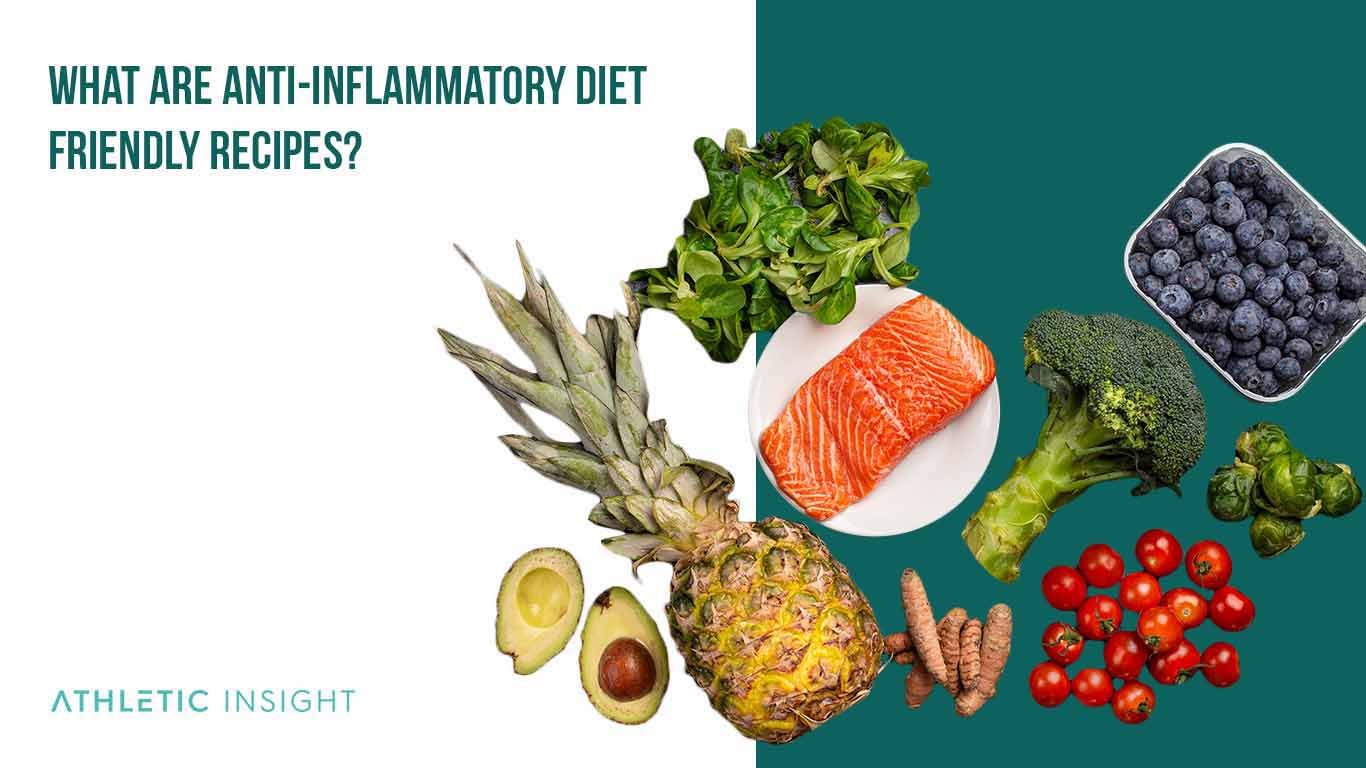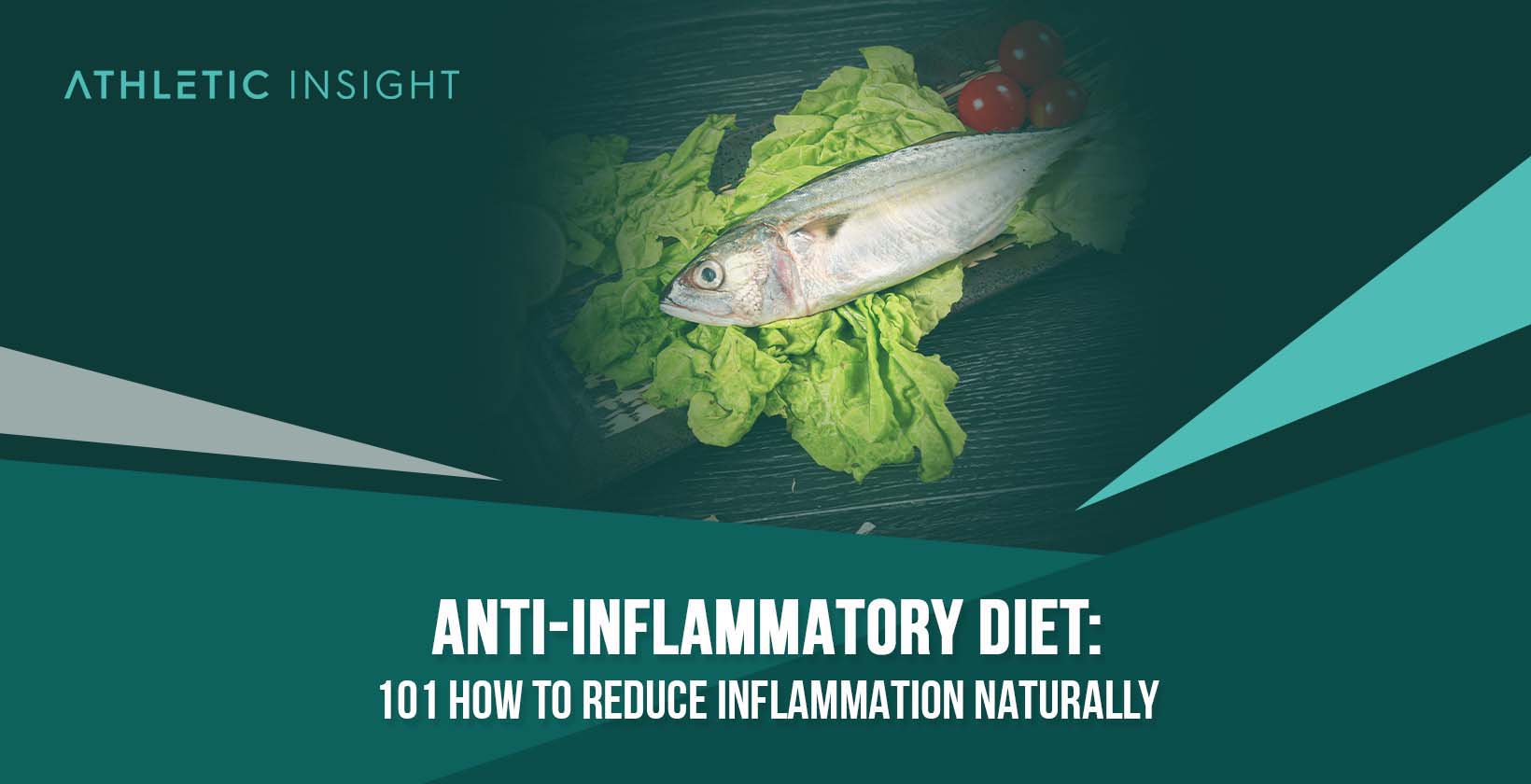Many people in the United States struggle with chronic illness and inflammation. Whether it manifests as achy joints, weight gain, stomach problems, or illness, chronic inflammation can cause years of discomfort.
Medicine and supplements can help inflammation and are essential for many conditions. However, an anti-inflammatory diet will remove any inflaming foods and provide a healthier way to eat. Even people who don’t suffer from inflammation can enjoy an anti-inflammatory diet plan and become healthier.
The anti-inflammatory diet isn’t specific in itself. Instead, it is a personalized lifestyle part of many other diets. DASH and the Mediterranean diet are both examples of anti-inflammatory diets because they are low in processed foods, sugars, and unhealthy fats.
How Does the Anti-Inflammatory Diet Work?
An anti-inflammatory diet works by reducing the amount of excess inflammation in the body. In small amounts, inflammation is crucial for staying healthy. When you are sick, inflammation fights off the illness and protects your major organs. It’s why many people get aches and pains when they have a common cold.

However, certain conditions cause more inflammation than necessary, sometimes even chronic inflammation. These conditions include asthma, arthritis, and some autoimmune disorders. Chronic inflammation leads to chronic pain, lessened mobility, and a higher risk of other illnesses.
There are certain types of foods that cause inflammation. These include greasy, fatty foods, processed foods, sugar, and alcohol. If a body already sensitive to inflammation has constant amounts of fat, sugar, alcohol, and other highly processed foods, it’s likely to have more excessive inflammation and pain.
An anti-inflammatory diet doesn’t necessarily cure these conditions. However, it does relieve symptoms and some inflammation by reducing the amount of unhealthy and processed foods. If a dieter can take out the foods that cause inflammation, it will lessen naturally and lead to a healthier lifestyle.
What are the Health Benefits of the Anti-Inflammatory Diet?
The anti-inflammatory diet is beneficial for all types of people because excess inflammation is never a good thing. However, it’s especially helpful for people with autoimmune diseases, obesity, or diabetes. Here are some of the health benefits of the anti-inflammatory diet.
- Improvement of symptoms of arthritis, inflammatory bowel syndrome, lupus, and other autoimmune disorders
- Decreased risk of obesity, heart disease, diabetes, depression, cancer, and other diseases
- Reduction in inflammatory markers in your blood
- Better blood sugar, cholesterol, and triglyceride levels
- Improvement in energy and mood
Each of these is a worthy reason to go on a diet, and almost anyone can benefit from reducing the number of saturated fats, having a more balanced diet, and eating fewer processed foods.
What are the Health Risks of the Anti-Inflammatory Diet?
As with any diet, it should be taken under the recommendation of a medical professional such as a doctor or nutritionist. The anti-inflammatory diet is a healthy diet for most people, but there are some health risks associated with it. Here are some of the health risks.
- Fatigue
- Hair thinning
- Nausea
- Vitamin B12 deficiency
Each of these can be minor but lead to more substantial health issues. When on the anti-inflammatory diet, many patients take B12 supplements and adjust the amount of food they eat to help combat these symptoms. Not all dieters experience these, and they are generally from a lack of sufficient nutrients.
How to do the Anti-Inflammatory Diet?
The anti-inflammatory diet involves slowly phasing out unhealthy fats, processed foods, and high carb or sugar foods. Although it’s not a specific diet plan, the anti-inflammatory diet plan is highly personal and can be adjusted based on a person’s reactions.
If after a few weeks, inflammation has not gone down, it’s time to make further changes. However, with these six steps, most people who struggle with excess inflammation find relief after switching to an anti-inflammatory diet plan.
Many of these steps can be concurrent, as some will be easier adjustments than others. Each person starting the anti-inflammatory diet will create their plan, with these steps as a general guideline.
1. Pick up a variety of Fruits, Vegetables, and healthy snacks
One of the most essential parts of any diet is prepping with healthy snacks. As your body adjusts to the anti-inflammatory diet, you can satisfy cravings by eating snacks such as fruit, vegetables, and other unprocessed foods.
Snacks are the easiest way to satisfy cravings, but they have to be low in saturated fats and preservatives. Take a look at the allowed food list before shopping to ensure that your healthy snacks are truly anti-inflammatory.
2. Gradually replace fast-food meals with healthy, homemade lunches
Habits can be difficult to break, so the anti-inflammatory diet doesn’t ask dieters to do it at once. The next step is to break the habit of fast food meals and unhealthy processed food. Over the next few weeks, take homemade lunches to work instead of stopping for fast food.
To make this transition easier, stock up on the ingredients for your lunches at the beginning of the week and schedule time to pack lunch every evening or morning before work. Bring some healthy snacks to eat during the day as well.
3. Replace soda and other sugary beverages with still or sparkling mineral water.
Another difficult step to take is to replace sugary drinks such as soda or juice with water. If it’s hard for you to drink water regularly, you can use sparkling water or flavored water. This option will cut down on your sugar intake tremendously and reduce the number of processed sugars going into your body.
Fast food and soda are the highest causes of inflammation because they are processed food. The more unnatural preservatives are in a food, the more likely those foods will cause inflammation.
4. Talk to a healthcare professional about supplements
Supplements can help with inflammation and are often necessary to avoid a lack of certain vitamins. Although you should never self-prescribe supplements or vitamins, a medical professional or nutritionist can tell you which supplements will help with inflammation and keep you at healthy levels.
Your inflammation levels might need specific supplements, which is why it’s recommended when you begin an anti-inflammatory diet. A combination of supplements, vitamins, and diet changes can decrease inflammation by a large percentage.
5. Incorporate 30 minutes of moderate exercise in your daily routine
Working out can seem impossible with certain inflammatory conditions, such as rheumatoid arthritis. However, after some time on an anti-inflammatory diet, most people find that half an hour of moderate exercise isn’t impossible.
As with all exercise habits, it’s essential to start small and work your way up, especially if you haven’t exercised in a while. However, 30 minutes of moderate exercise will increase your metabolism, help you lose unhealthy fat, and decrease inflammation throughout your body.
6. Practice good sleep hygiene
Cutting down on inflammation is not only about diet. It’s also about a healthy lifestyle, which includes moderate exercise and sleep hygiene. It may seem like your sleep schedule has nothing to do with inflammation, but sleep hygiene can help your body get adequate rest and reduce inflammation naturally.
Setting a regular bedtime and wake-up is personal and depends on your work schedule and preferences. However, sleeping on the same schedule is essential for good health. Diet aside, a regular sleep and exercise schedule will increase your health.
How to Start an Anti-Inflammatory Diet?
Before you start an anti-inflammatory diet, it’s essential to talk to your doctor about the changes you will be making. Everyone’s body is different, and your primary care physician can help you adjust your menu to help you thrive. After you’ve received your doctor’s approval and any specific instructions, you can go to the grocery store.
Diets are difficult, but they can be easier to follow if you have the ingredients on hand. If necessary, do a pantry purge and take out the foods you aren’t allowed to eat. Hide them or give them to a relative, and make a grocery list out of the foods on the following list.
After you plan to start your diet and go to the grocery store, you can follow the steps above to make your anti-inflammatory diet a success. It will become easier as you go on, especially if pain and inflammation reduce when you’re following it.
Anti-inflammatory diets aren’t restrictive enough to prevent restaurant eating, just fast food, so you can continue to see friends and live a life. You won’t have to worry about eating out or bringing your food. Adjust the diet to your personal needs and lifestyle, and you will see a positive change in your health.
What are the Foods That You Can Eat on an Anti-Inflammatory Diet?
The most vital step of any diet is to make a grocery list and keep those foods on hand. That will lessen the temptation to break your diet. Here are the foods you can eat on the anti-inflammatory diet.

- Vegetables: most vegetables, but especially leafy greens, broccoli, tomatoes, cabbage, carrots, and anything with lots of colors
- Fruit: Most fruits, especially berries and other dark, colored fruits
- High-fat fruits: pineapple, papaya, avocado
- Healthy fats: olive oil and other oils (not butter or margarine)
- Fatty fish: salmon, tuna, and sardines. Any fish is excellent on this diet
- Nuts: all nuts are acceptable, but not too many per day. They are an anti-inflammatory food that is high in healthy fat
- Peppers: all peppers, especially sweet bell peppers
- Chocolate: limited dark chocolate – it is extremely anti-inflammatory, but the milkier it is the higher in sugar and fat
- Spices: any herbs and spices, especially turmeric and ginger
- Tea: any tea
- Red wine: red wine is anti-inflammatory, but should be limited to one glass per day
What are the Foods That You Should Avoid on an Anti-Inflammatory Diet?
When on an anti-inflammatory diet food list, you should avoid the following foods.
- Anything processed
- Anything with saturated or trans fats
- Anything with too much sugar
- Processed carbohydrates, such as white bread
- High fat red meat
- Processed meat (such as hot dogs)
- Sweets, candies, soda
- High fat cheese, whole milk, butter
- Margarine and coffee creamers
- Fried food
- Garlic and onion
What are the Facts About Anti-Inflammatory Diet?
The anti-inflammatory diet wasn’t developed by a specific doctor but as a general health rule. After doctors and scientists observed that certain foods had inflammatory effects on the joints, muscles, and organs, they recommended anti-inflammatory food to combat illness and inflammation in patients.
Is Anti-Inflammatory Diet considered a healthy diet?
Yes, the anti-inflammatory diet is considered a healthy diet, not just for those suffering from chronic inflammation or autoimmune diseases, but for everyone. Because it reduces the number of sugars, processed foods, and unhealthy fats, this diet can help many people get into a healthier relationship with food.
Anti-inflammatory diet plans such as the Mediterranean diet are popular nowadays, especially because they don’t restrict dietary choices or lifestyle too much. As long as sugar, high-fat meats, and processed foods are avoided, dieters can eat delicious foods and enjoy their meals.
This diet will reduce the risk of many long-term health issues, such as heart disease and diabetes. Even for moderately healthy people, the anti-inflammatory diet plan is considered healthy by most medical professionals.
Is an Anti-inflammatory diet worth trying?
Yes, the Anti-inflammatory diet is worth trying if you struggle with inflammation and chronic pain, the Mediterranean diet is especially worth trying. Chronic pain sufferers know that they would do anything to stop feeling sick all the time, and medications don’t always alleviate all of the symptoms. This diet can help lessen aches from inflammation, migraines, and bowel issues.
However, if you’re trying to get healthier and don’t necessarily struggle with inflammation, you might be surprised at the health benefits of going anti-inflammatory. It will increase your risk of illness, improve your immune system, and give you more energy throughout the day.
Is an Anti-inflammatory diet expensive?
No, the anti-inflammatory diet is not nearly as expensive as many other diets available. There is no supplement or diet product necessary, and the only expense is food. The first grocery trip might be a little pricey, but after that, the anti-inflammatory diet shouldn’t cost more than your average grocery trip.
Unfortunately, the price will go up for certain foods and restaurants. Most fast-food restaurants are not allowed on the anti-inflammatory diet plan, so it might become necessary to go to sit–down restaurants. Fresh food is also more expensive than processed food.
Although fresh food usually costs more than processed and preserved food, studies show that the average American spends much more a year on fast food than at the grocery. In some cases, dieters might even save money by switching to an anti-inflammatory diet.
Who Should do the Anti-Inflammatory diet?
The anti-inflammatory diet can be tried by anyone who wants to eat healthier and reduce chronic inflammation within their body. While many people do this diet for health reasons, others are interested in a more natural, lower-fat diet.
Here are some of the health conditions that may require a lower fat or anti-inflammation diet.
- Arthritis and rheumatoid arthritis
- Psoriasis
- Esophagitis
- Crohn’s disease
- Ulcerative colitis
- Inflammatory bowel disease
- Lupus
- Asthma
- Metabolic syndrome
- Hashimoto’s thyroiditis
These and other diseases reduce the body’s ability to fight illness and increase the amount of inflammation in the body. An anti-inflammatory diet often decreases excess inflammation. It can also decrease symptoms of the diseases that are associated with inflammation.
What are Anti-Inflammatory Diet Friendly Recipes?
Because anti-inflammatory diet plans are so customizable, there are plenty of recipes available to help you plan meals for your first few weeks. However, after a few weeks, you will understand what you like and don’t like and have a better idea of what to make.

There are several anti-inflammatory diet recipes you can find on sites like Pinterest, including recipes from the Mediterranean diet and DASH. They should help as you look at the food list and decide what to buy at the grocery store.
How Many Calories can you Consume when doing the Anti-inflammatory diet?
As stated above, the anti-inflammatory diet is customizable. The amount of calories you consume each day depends solely on your body composition: weight, height, and sex. The USDA generally recommends 2,000-3,000 calories a day, so if you need to plan, aim for that number.
However, your calories should always include several servings of fruits and vegetables (which are generally very low in calories) and plenty of protein. Filling up calories with carbohydrates or only vegetables can cause malnutrition and further inflammation. Always talk to your doctor about calorie counting.
What are the initial reactions of the body to anti-inflammatory diets?
As with any diet, the body will take some time to adjust to an anti-inflammatory diet. If you’ve been eating sugary and highly processed carbohydrates and fats, your body might go through a decompression stage at first. You’ll experience cravings and hunger and may desire certain foods more than the healthy ones on hand.
However, it takes three weeks to fully detox from unhealthy foods. After this time, you might occasionally want extra sugar or fat, but you’ll likely grow accustomed to the healthy, unprocessed food you’ve been eating at home. There are no significant side effects, although your body will feel better.
What is the proposed time frame for an anti-inflammatory diet?
It can take several weeks for an anti-inflammatory diet to start working. This process depends on how long it takes to completely cut out sugars, fats, and processed carbohydrates in your diet. However, once you start seeing results, meaning the diet is working.
Like any healthy diet, the longer you can stay on it, the better. If you struggle with chronic inflammation, it’s going to get worse every time you eat inflammatory or trigger foods. An anti-inflammatory diet is meant to become a lifestyle habit (with exceptions for important celebrations and special occasions).
Can Supplements Help Reduce inflammation?
Yes, medicine and supplements can both reduce inflammation and in some cases are necessary additions to an anti-inflammatory diet. Adding inflammation supplements to a diet is an effective choice, but you should always talk to your doctor first.
Supplements such as vitamins, minerals, and essential oils can naturally soothe the body and reduce the symptoms of inflammation. However, as long as the cause is still there, the body will continue to inflame.
Does Exercise Make inflammation worse?
No, exercise should not make inflammation worse unless you overdo it and injure yourself. As long as the dieter exercises moderately and eats well, exercise will decrease inflammation and protect the body from infections and other issues. Work out for at least 30 minutes a day to see the effects.
However, if you start the anti-inflammatory diet and begin exercising, pay attention to the signs your body gives you. If inflammation increases or you feel overly sore or in pain, reduce your workouts to gentle stretches and walks and work your way up slowly.
What are the dos and don’ts of an inflammatory diet?
Here are some dos and don’ts for inflammatory diet beginners.
- Do: Listen to your body and take the beginning of the diet slowly
- Don’t: Cut out everything all at once and deny yourself food.
- Do: Exercise gently and increase gradually.
- Don’t: Over-exercise and injure yourself.
- Do: Prepare by making a grocery list and keeping away from tempting foods.
- Don’t: Leave your favorite unhealthy foods in the house.
- Do: Be patient as your body adjusts to the new diet and prepare to make changes.
- Don’t: Assume that everything will be fixed as soon as you start the diet.
What are the general anti-inflammatory diet tips?
When on an anti-inflammatory diet, it’s easy to get discouraged. Near the beginning, you will have cravings for greasy and sugary foods, but it’s essential to get through those until your body adjusts. Here are some of the best tips for an anti-inflammatory diet.
- Don’t keep forbidden foods in the house
- Stock up on healthy snacks for when cravings hit
- Get a good sleep schedule
- Don’t go out to restaurants until you’ve been dieting a while
- Adjust the diet to your own needs
- Use sparkling or flavored water instead of regular water
- Find some favorite foods and good recipes before you start the diet
Each of these is a helpful tip, but the best one might be to adjust your diet accordingly. Some people need more protein than others, while others do well with less meat. You can change the anti-inflammatory diet depending on your personal needs.



